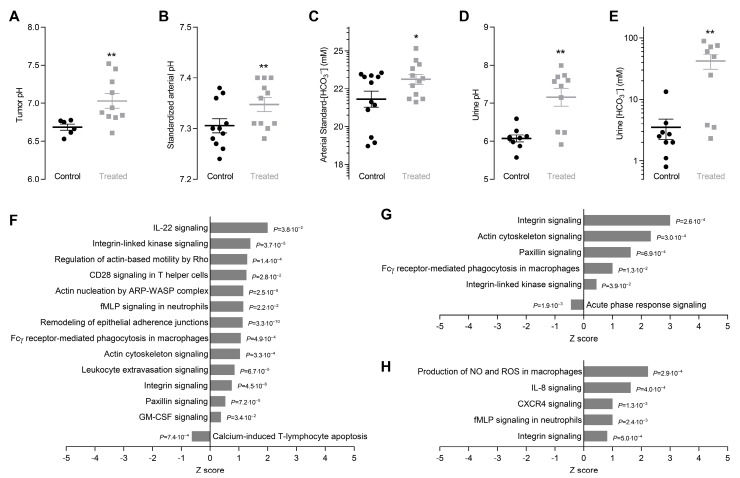Figure 1.
Oral NaHCO3 therapy alkalinizes breast tumors and increases [HCO3–] and pH of arterial blood and urine. It also leads to marked protein expression changes related to immune function, cytoskeleton, and cell-cell and cell-matrix interaction. (A–C). Tumor pH (A) along with pH (B) and standard-[HCO3–] (C) of arterial blood from NaHCO3-treated mice and control mice (n = 6–11) mechanically ventilated to normocapnia (expiratory end-tidal CO2 fraction of 3.8%). (D,E). Urine pH (D) and [HCO3–] (E) of NaHCO3-treated mice and control mice (n = 9–10). (F–H). Protein expression changes related to immune function, cytoskeleton, and cell-cell and cell-matrix interaction. We compare breast cancer tissue vs. normal breast tissue from control mice (F), breast cancer tissue from NaHCO3-treated mice vs. control mice (G), and normal breast tissue from NaHCO3-treated mice vs. control mice (H). Data in panel C were log-transformed in order to improve normal distribution. Data in panel A were compared by unpaired two-tailed t-test with Welch’s correction for unequal variance, data in panel B through D were compared by unpaired two-tailed Student’s t-tests, and data in panel E were compared by the non-parametric Mann-Whitney test. p-values in panel F through H were calculated based on Fisher’s right-tailed exact test. *p < 0.05, **p < 0.01 vs. Control.

